

Inquiry
Avian Bioscience Research Center
Nagoya Univ. Graduate School of Bioagricultural Sciences
| Chicken strains and lines | Quail lines |
| Ancestral speciesInbred strainsLong-term closed coloniesClosed colonies Disease modelsDeveloping coloniesTransgenic chickens Primordial germ cell lines | Long-term closed coloniesTransgenic quails |
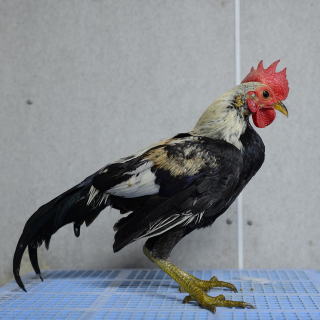
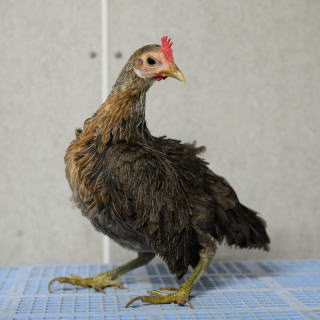
| Origin |
| Originated from ♂1 and ♀1 introduced from a chicken fancier in Miyagi Pref. (2008) |
| Characteristics |
| It is maintained as a closed colony derived from one pair introduced. It has a small body size. It has developed for research the dwarf gene and the gene that control the attitude, and for adaptive research of in vitro culture eggshell for small birds such as a quail. |

| Origin |
| Introduced from Kochi Prefectural Livestock Experiment Station through Faculty of Agriculture, Shinshu Univ. in order to utilization for research materials (2006) |
| Characteristics |
| It is a dwarf line (originated from RIR breed). |
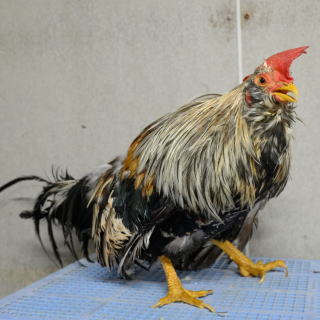
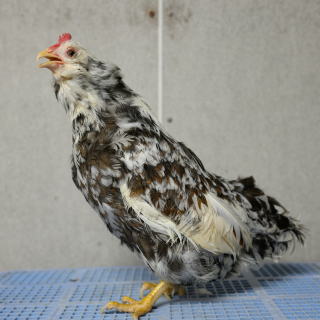
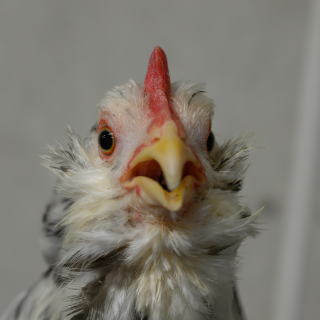
| Origin |
| It is a native chicken in Okinawa. ♂1 was introduced from a chicken fancier in Ehime Pref. (2007), then hatching eggs were transferred from the Society for the Preservation of Chahn in Uruma city, Okinawa Pref. (March 2009) by the introduction of Prof. Shinjo, Ryukyu Univ. and ♀3 were developed. |
| Characteristics |
| From males obtained from the parent generation, individuals with excellent crowing have been selected and backcrossed with ♀3 in the parent generation, then the next generation was obtained. After that it is maintained as a closed colony of a native chicken breed. It is a wide range color of variegated colors, black, black and white, etc. |
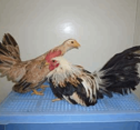
| Origin |
| EJ is a native chicken remaining in the southwestern region of Ehime Pref. It was originated from ♂1 and ♀13 and hatching eggs introduced from a chicken fancier in Ehime Pref. (2007) |
| Characteristics |
| It has been maintained as a closed colony of about 40 birds until around 2011, and it is now maintained as a colony of ♂5-10 and ♀5-10. |
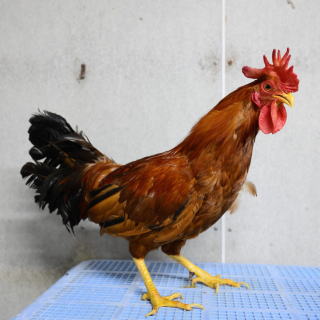
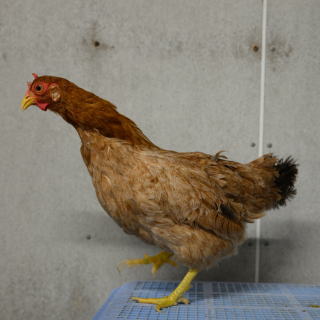
| Origin |
| It is a native chicken in Egypt. DD was originated from ♂1 and ♀1 introduced to Kagoshima Univ. from a chicken fancier in Kagoshima Pref. around 2001. After passages 2-3 generations as closed colony of around 10 birds until 2004, some of them have been transferred and kept in the Wild Avian Reproduction Center in Yamanashi Pref. and a chicken fancier in Ehime Pref. in 2004. ♂1 and ♀1 were introduced to Nagoya Univ. from the chicken fancier in Ehime Pref. in 2008. |
| Characteristics |
| As hatching ratio was not good from the original one pair introduced, new ♂1 was introduced from the Wild Avian Reproduction Center in Yamanashi Pref. and next generation of ♂1 and ♀1 were obtained. It is now maintained as a closed colony of 20-30 birds derived from this pair. |
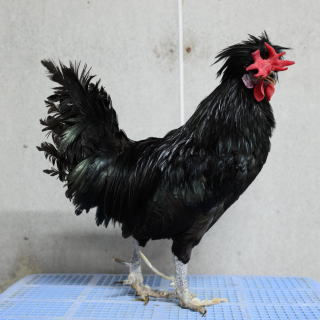
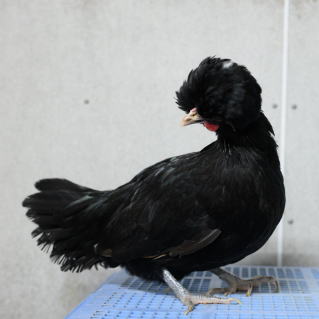
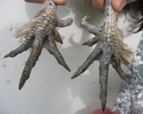
| Origin |
| Hatching eggs were introduced from the chicken fancier in Chiba Pref. (April 2007) |
| Characteristics |
| Based on ♂3 and ♀1 derived from the introduced eggs, about 10 birds of colony have been maintained until 2010. But because of bad ratio of laying and nurturing it was crossed with ♀1 of PNP/DO line and the F1 was backcrossed with Polish, then offspring with the characteristics of the Polish were selected. After that they have been again backcrossed with Polish, it is maintained as a closed colony derived from the obtained around 10 birds since 2010. |
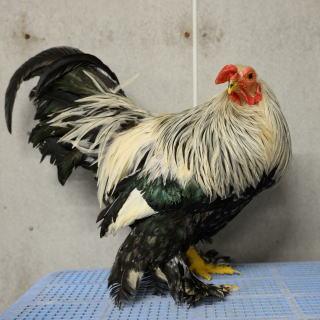
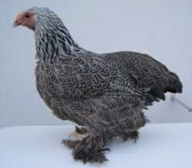
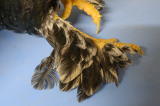
| Origin |
| BRB is a newly developed colony which was derived from a mating between one of Brahma bantam and one female of the Brown Leghorn (BL-E) line. |
| Characteristics |
| BRB exhibits silver penciling plumage. Their feathered leg related traits, such as ptilopody (Pti and pti) , vulture hock (v), and bracydactyly (By), are still not fixed. |
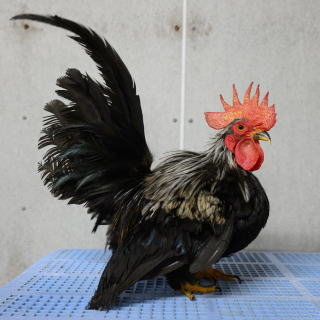
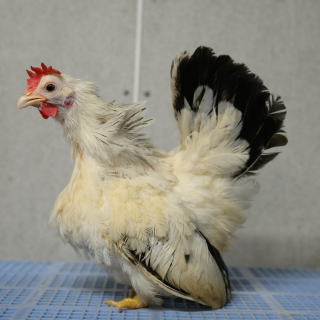
| Origin |
| JB is a closed colony of Japanese bantam which was derived from some varieties of Japanese bantams (black, white, blue, Colombian, barred, etc.). |
| Characteristics |
| JB has an autosomal incompletely dominant trait, creeper (Cp), which causes short legs in heterozygotes and embryonic lethality in homozygotes. Plumage colors are not fixed. |
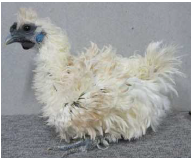
| Origin |
| FZSIL is a newly developed colony which was derived from a mating between one male of frizzled Japanese Silkie and one female of the Brown Leghorn (BL-E) line. |
| Characteristics |
| Frizzling phenotype of FZSIL is similar to that of FZBL. However, no mutation is found in KRT75 (KRT6A) gene in FZSIL. Complementation test revealed that the frizzling locus (F) of FZSIL is different from that of FZBL. FZSIL has some different mutations. such as crest (Cr), silkiness (h), fibromelanosis (Fm), polydactyly (Po), and feathered leg (pti). |
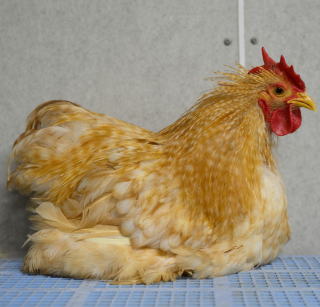
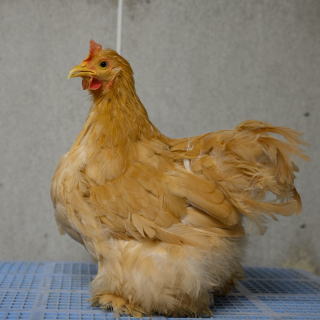
| Origin |
| CB is a closed colony originated from a pair of Cochin bantam with a variety of buff plumage color. |
| Characteristics |
| CB exhibits buff plumage color with or without sex-linked barring (B). The genetic mode of buff plumage is still not clarified; however it is thought to be caused by an interaction between a variety of plumage color loci, such as Colombian (Co), E (E), Mahogany (Mh), and dilution (Di). The CB has heavily feathered leg traits, such as ptilopody (Pti and pti) and vulture hock (v). |

| Origin |
| MIL is a closed colony originated from a pair of Belgian bearded bantam with a variety of Millefleurs plumage color. |
| Characteristics |
| MIL has a variety of mutations, such Muff/Beared (Mb), featherd leg (Pti and pti), vulture hock (v), Colombian (Co), spangling (Sp), and mottled (mo). |
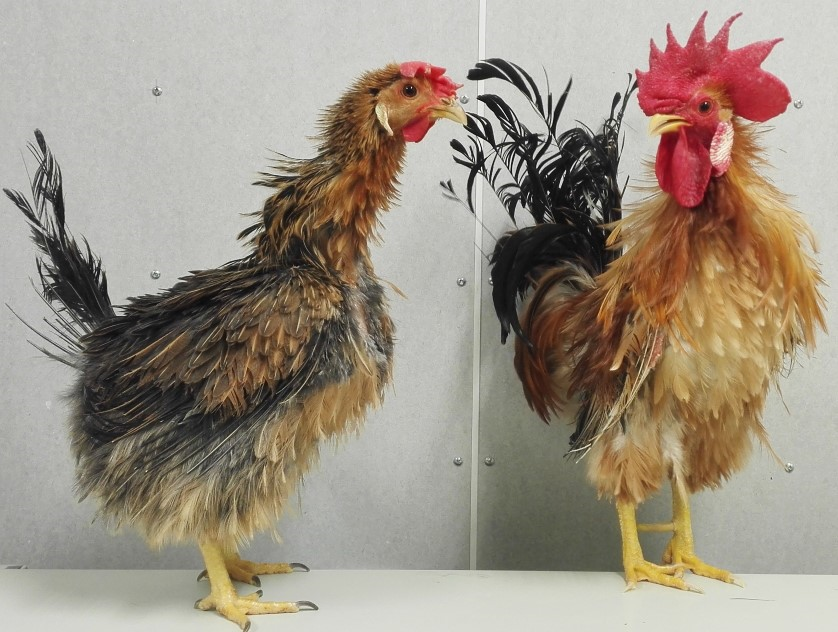
| Origin |
| FZBL line is a newly developed colony with frizzling mutation, which was derived from a mating between one male of frizzled white Japanese bantam and one female of the Brown Leghorn (BL-E) line. |
| Characteristics |
| The frizzling is a mutation of feather morphology, which is caused by an incompletely dominant autosomal gene (F). The responsible gene of the F locus was identified as a 69-bp deletion in KRT75 (KRT6A), which cause a 23 amino acid deletion in KRT75 (KRT6A) (Ng et al., 2012). In this line some birds exhibit incompletely fizzled plumage by a modifier gene (mf). The plumage color also segregates into either wild type, Colombian (Co), or recessive white (c). |
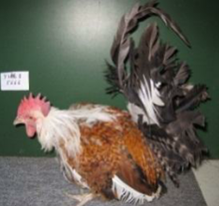
| Origin |
| TK is a newly developed colony which was derived from a mating between one male of Japanese bantam with malformation of iris and one female of the Fayoumi (GSP) line. |
| Characteristics |
| TK exhibit a white spotting or white patched plumage on the head, wing and tail, and the drooping of the upper eyelid, and iris abnormalities occur in a low frequency. |
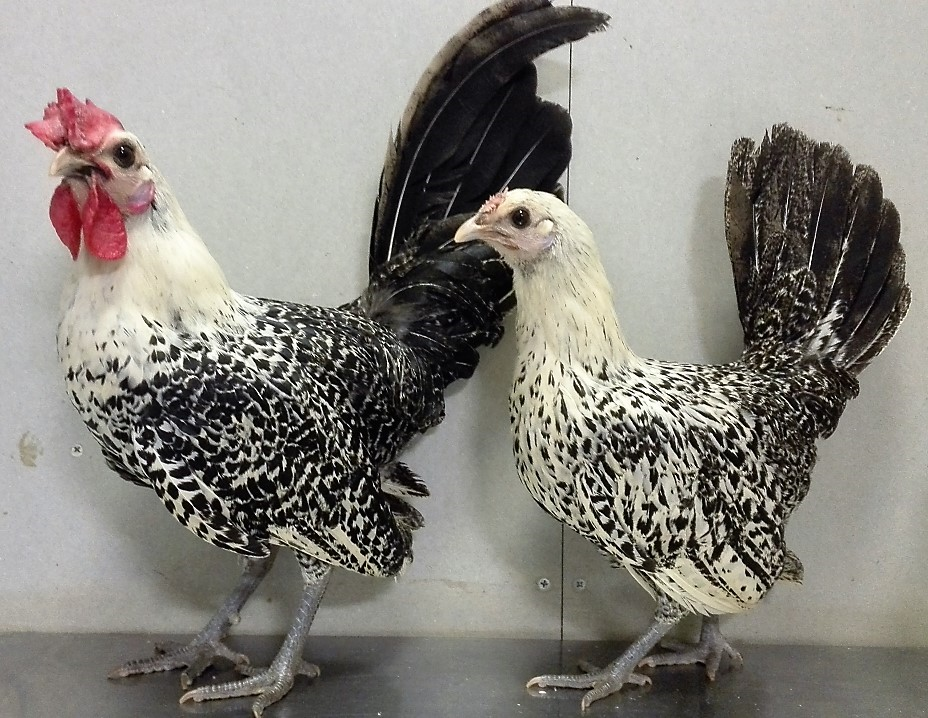
| Origin |
| SEBGSP is a newly developed colony which was derived from a mating between one male of Golden Sebright bantam and one female of the Fayoumi (GSP) line. |
| Characteristics |
| SEBGSP has some mutations, such as rose comb (R), hen-feathering (Hf), and lacing plumage. The lacing plumage is considered to be caused by interaction between plumage color loci such as Colombian (Co), E (E), dark drown (Db), and melanotic (Ml). |
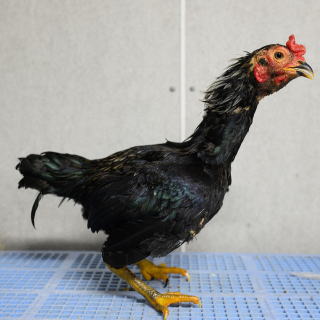
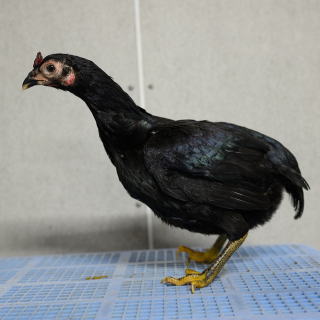
| Origin |
| KS is a newly developed colony which was derived from a mating between one male of Koshamo and one female of the Fayoumi (GSN/1) line. |
| Characteristics |
| Some birds of KS exhibit a serious sore of the epidermis in juvenile period. Pathological analysis indicates that the skin disease is associated with the loss of the thymus. |
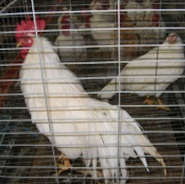
| Origin |
| SHOGSP is a newly developed colony which was derived from a mating between Shokoku and the Fayoumi (GSP) line. |
| Characteristics |
| SHOGSP has some mutations, such as long tailed (Gt), sex-linked silver (S), and novel recessive white mutation (mow) at the mo locus. However, these traits are still not fixed in SHOGSP. |